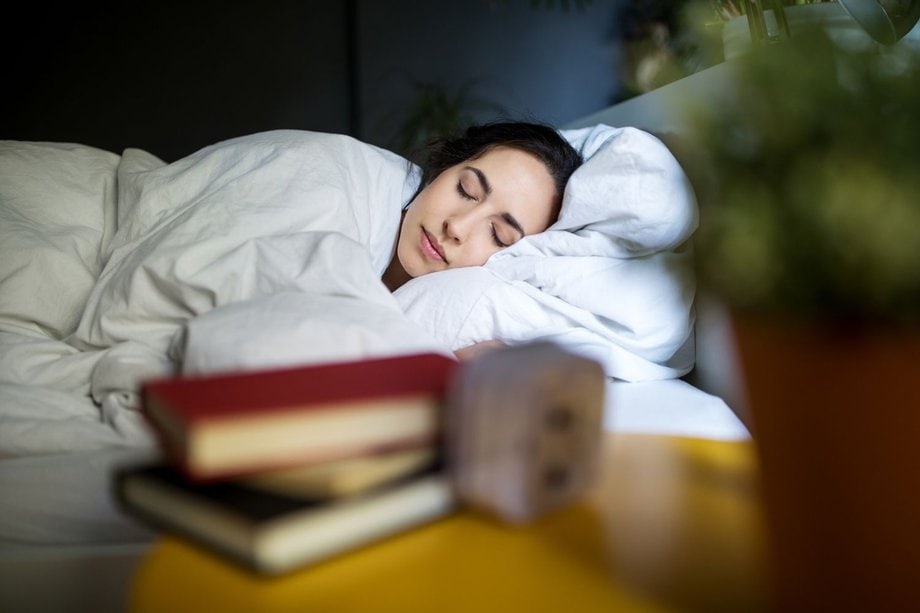How to Create a Comfortable Sleep Environment

This article aims to provide practical guidance on creating a comfortable sleep environment. Sleep quality is influenced by various factors, including the sleep environment. This introduction will outline the importance of the sleep environment and provide strategies for optimizing it.
The article will cover topics such as:
- Selecting the appropriate mattress and pillows
- Controlling temperature and humidity
- Reducing noise and light disturbances
- Establishing a relaxing bedtime routine
- Incorporating aromatherapy and essential oils
By implementing these recommendations, individuals can enhance their sleep environment and potentially improve their overall sleep quality.
Key Takeaways
- Choosing the right mattress and pillows based on personal preferences is crucial for a comfortable sleep environment.
- Maintaining optimal temperature and humidity levels promotes better sleep quality.
- Reducing noise and light disturbances in the sleep environment can improve sleep duration and quality.
- Incorporating a relaxing bedtime routine and using aromatherapy can create a more comfortable sleep environment.
Importance of Sleep Environment
The importance of the sleep environment lies in its ability to promote optimal conditions for rest and relaxation. Sleep hygiene refers to the practices and habits that are necessary for a good night’s sleep. One crucial aspect of sleep hygiene is creating a sleep environment that is conducive to sleeping well.
The impact of the sleep environment on overall health cannot be understated. A comfortable sleep environment can improve sleep quality and duration, leading to better physical and mental health outcomes. Factors such as noise levels, temperature, lighting, and mattress quality all play a significant role in creating an ideal sleep environment.
Choosing the Right Mattress and Pillows
Selecting appropriate mattresses and pillows is crucial for optimizing sleep quality and promoting spinal alignment. The right mattress firmness and pillow material can significantly impact the comfort and support provided during sleep.
When choosing a mattress, individuals should consider their preferred level of firmness. A mattress that is too soft may not provide adequate support, leading to poor spinal alignment and potential discomfort. Conversely, a mattress that is too firm may create pressure points and cause discomfort.
In terms of pillows, the material plays a key role in determining comfort and support. Memory foam pillows contour to the shape of the head and neck, providing personalized support. Latex pillows offer a springy and supportive feel, while down pillows offer a soft and fluffy texture.
Ultimately, finding the right mattress firmness and pillow material is essential for ensuring a comfortable and restful sleep experience.
- Consider personal preferences for mattress firmness
- Avoid mattresses that are either too soft or too firm
- Opt for memory foam pillows for personalized support
- Choose latex pillows for a springy and supportive feel
- Select down pillows for a soft and fluffy texture
Temperature and Humidity Control
This discussion will explore the relationship between ideal sleep temperature, humidity, and sleep quality.
The ideal sleep temperature is often described as being cool, typically between 60 to 67 degrees Fahrenheit, as it promotes better sleep quality.
In addition, maintaining an optimal level of humidity in the sleep environment can also contribute to better sleep quality.
Ideal Sleep Temperature
Maintaining an optimal sleep temperature is crucial for creating a comfortable sleep environment. The ideal sleep temperature varies for individuals, but it generally falls between 60 to 67 degrees Fahrenheit (15 to 19 degrees Celsius). Achieving this temperature range can significantly improve sleep quality.
Several factors contribute to the importance of maintaining the ideal sleep temperature:
- Regulating body temperature: A cooler sleep environment helps the body maintain its core temperature, promoting deeper sleep.
- Melatonin production: Cooler temperatures facilitate the release of melatonin, the hormone that regulates sleep-wake cycles.
- Reducing night sweats: A cooler sleep environment can prevent excessive sweating, which can disrupt sleep.
- Comfortable bedding: Cooler temperatures allow for better utilization of bedding materials, such as breathable fabrics or temperature-regulating technology.
- Minimizing sleep disturbances: A cooler sleep environment reduces the likelihood of waking up due to discomfort or overheating.
Humidity and Sleep Quality
Humidity levels in the bedroom can have a significant impact on the quality of sleep experienced by individuals. High humidity levels can create a damp and muggy environment, making it difficult for individuals to fall asleep and stay asleep. On the other hand, low humidity levels can lead to dry air, which can cause irritation to the respiratory system and aggravate allergies. Maintaining an optimal humidity level in the bedroom is crucial for promoting a comfortable and restful sleep environment.
Research has shown that a humidity level between 40% and 60% is ideal for sleep. This range provides a balance between preventing excessive moisture buildup and minimizing dryness in the air. To monitor and regulate humidity levels, individuals can use a hygrometer, which measures the amount of moisture in the air. Additionally, using a humidifier or dehumidifier can help adjust humidity levels to the desired range. By maintaining proper humidity in the bedroom, individuals can improve their sleep quality and reduce the impact of air quality on their sleep.
| Humidity Level | Effect on Sleep Quality |
|---|---|
| High | Difficult to fall asleep and stay asleep |
| Low | Respiratory irritation and aggravated allergies |
| Optimal (40-60%) | Promotes a comfortable and restful sleep environment |
Table 1: Effects of Different Humidity Levels on Sleep Quality.
Reducing Noise and Light Disturbances
This paragraph introduces a discussion on soundproofing techniques and blocking out light as key points for reducing noise and light disturbances.
These techniques are important for creating a peaceful and undisturbed sleep environment. By implementing effective soundproofing measures and utilizing methods to block out light, individuals can enhance the quality of their sleep and promote better overall rest.
Soundproofing Techniques
To minimize external noise and create a quieter sleep environment, employing soundproofing techniques can be highly effective. Soundproofing materials can be used to block or absorb sound waves, reducing the amount of noise that enters a room. For apartments, where noise from neighboring units can be a common problem, soundproofing can be particularly beneficial.
Here are some soundproofing techniques to consider:
- Installing acoustic panels on walls or ceilings to absorb sound.
- Using heavy curtains or blinds to block out noise and light.
- Adding weatherstripping or door sweeps to seal gaps around doors and windows.
- Applying soundproofing wallpaper or foam tiles to walls.
- Using soundproofing mats or underlayment beneath flooring to reduce impact noise.
Blocking Out Light
Installing blackout curtains or blinds can effectively reduce the amount of light that enters a room, creating a darker and more conducive environment for rest. Light blocking curtains are specifically designed to block out sunlight and other sources of light, preventing them from entering the room. These curtains are typically made with thick, opaque fabrics that are tightly woven to prevent any light from penetrating through. Another option for blocking out light is using sleep masks. Sleep masks are worn over the eyes and provide a physical barrier between the eyes and any light sources in the room. They are portable and can be easily adjusted to fit the individual’s comfort level. Both light blocking curtains and sleep masks can be effective solutions for creating a dark sleep environment.
| Advantages | Disadvantages |
|---|---|
| – Blocks out light effectively | – May not completely eliminate all light |
| – Creates a darker sleep environment | – Requires installation for curtains |
| – Can be customized to fit the room decor | – Sleep masks may be uncomfortable for some individuals |
| – Provides privacy | – Sleep masks may cause pressure on the eyes |
| – Can be used in combination with other sleep aids | – Sleep masks may be easily misplaced |
Creating a Relaxing Bedtime Routine
Establishing a consistent and soothing bedtime routine contributes to the creation of a relaxing sleep environment. By incorporating relaxing bedtime rituals and creating a calm atmosphere, individuals can improve the quality of their sleep.
The following are five key elements to consider when creating a relaxing bedtime routine:
- Dimming the lights: Lowering the intensity of lights in the evening signals to the body that it is time to wind down and prepare for sleep.
- Engaging in calming activities: Reading a book, practicing meditation, or taking a warm bath can help relax the mind and body before bed.
- Avoiding stimulating stimuli: Minimizing exposure to electronic screens and loud noises can help create a peaceful environment conducive to sleep.
- Maintaining a consistent schedule: Going to bed and waking up at the same time every day helps regulate the body’s internal clock and promotes better sleep.
- Creating a comfortable sleep environment: Investing in a supportive mattress, comfortable pillows, and breathable bedding can enhance overall sleep quality.
Incorporating Aromatherapy and Essential Oils
Incorporating aromatherapy and essential oils can be a potential addition to a bedtime routine to enhance relaxation and promote a calming atmosphere. Aromatherapy benefits have been widely recognized for their potential to improve sleep quality and reduce insomnia symptoms.
Essential oils, such as lavender, chamomile, and sandalwood, are commonly used for their relaxing and sedative properties. One way to incorporate aromatherapy into a bedtime routine is through the use of essential oil diffusers. These devices disperse the essential oils into the air, allowing their scent to be inhaled and potentially inducing a state of relaxation.
The diffusion of essential oils can create a calming environment that helps prepare the mind and body for sleep. However, it is important to note that individual responses to aromatherapy may vary, and it is recommended to consult with a healthcare professional before incorporating essential oils into a bedtime routine.
Frequently Asked Questions
Can the Use of Essential Oils and Aromatherapy Help Improve Sleep Quality?
The benefits of essential oils and aromatherapy techniques on sleep quality have been studied. Research suggests that certain essential oils, such as lavender, may have a positive impact on sleep, promoting relaxation and reducing insomnia symptoms.
Is It Necessary to Invest in a Specific Type of Mattress and Pillows for a Comfortable Sleep Environment?
Investing in a high quality mattress and pillows can contribute to a comfortable sleep environment. The impact of room decor on sleep quality is an area that requires further research to determine its significance.
How Can I Control the Temperature and Humidity in My Bedroom for Better Sleep?
To create a comfortable sleep environment, temperature control and humidity regulation are essential. By maintaining an optimal temperature and humidity level in the bedroom, individuals can promote better sleep quality and overall comfort.
What Steps Can I Take to Reduce Noise and Light Disturbances in My Sleep Environment?
Reducing external distractions is crucial for creating a comfortable sleep environment. One effective step is using blackout curtains, which can block out light and reduce noise disturbances, leading to improved sleep quality.
Are There Any Specific Activities or Practices I Can Incorporate Into My Bedtime Routine to Promote Better Sleep?
Meditation techniques for better sleep and the importance of a consistent sleep schedule are activities that can be incorporated into a bedtime routine to promote better sleep.









